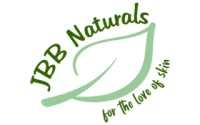Common Soap Terminology
What is Cold Process (CP)? The process of mixing a fat (oils and butters) with a salt (sodium hydroxide or also known as lye). The result is a chemical process called saponification, where the oils and the lye change their composition and the result is soap. There are dangers when making cold process soap. You will need to refer to lye safety before getting started. With the proper safety gear and the right ingredients and tools you can make amazing soaps.
Cold process can be made with skin nourishing oils and butters. Glycerin naturally occurs in cold process soap.
What is Hot Processing (HP): HP refers to Hot Process. Hot Process soap making is when you “cook” cold process soap to speed up the saponification process. This is usually done in a crockpot or oven. HP soap bars can be used as soon as they have cooled, but would benefit from a longer cure.
Cold Process Soap (CP)/Hot Process Soap (HP): The process of mixing a fat (oils and butters) with a salt (sodium hydroxide or also known as lye). The result is a chemical process, called saponification, where the oils and the lye change their composition, and the result is soap. Glycerin naturally forms in cold process soap.
Cold Process/Oven Process: Pronounced as “SEE-POP” is a popular soap making method for promoting gel phase in your handmade soaps. Basically, its using heat from your oven to extend the temperature phase during saponification in an effort to promote or “force” gel phase.
Rebatching: Rebatching is the process of melting down existing soap to create new soap. This process is used when your soap didn’t quite come out exactly how you wanted it, so you have the chance to create something new out of the “bad” soap. By melting down the soap, you can add additional oils to correct the lye imbalance, or add exfoliants or additives.
Melt & Pour:
If you are a beginner soap maker, we recommend starting with melt and pour soap bases. These use the very safe Melt and Pour Soap Bases, and allow you to creatively make soap without using dangerous chemicals. Melt and pour soap is a glycerin soap base that can be melted and poured into a mold. You can add scents and other additives.
Cold Process/Hot Process Soap Terminology
Additives: Any ingredient that is added to the soap that is not part of the soap itself is considered an additive. Additives may include herbs, salts, clays, vitamins, seeds, preservatives, extracts, etc.
Caustic: A caustic is a corrosive substance that burns or destroys organic tissue by chemical action. It is typically used to describe the action of an alkaline base. Lye is a caustic substance.
Cure: Cure refers to “curing” soap by leaving soap out in a well circulated room, so the moisture evaporation can occur. This is generally done 24 to 72 hours after the soap has been prepared in its molds. It can be done by taking the soap out of its molds and leaving it in full shape or cutting it. If soap is placed on a flat surface, it will need to be rotated every few days. It is preferable that you place the soap on a stainless steel rack, so the soap can have plenty of ventilation. Curing can take anywhere from 4 to 6 weeks. This is when the soap is at its mildest.
Essential Oil(EO): EO refers to Essential Oils. Essential oils can be used to scent your soap or other body products. Essential oils are steam distilled or chemically distilled from plants. This is a more natural way to scent your soaps. They are volatile oils.
Exfoliants: Exfoliants are additives that make the soap scrubby, and make it exfoliate the skin. Some exfoliants used in soaps include, but are not limited to, apricot kernel seeds, blueberry seeds, ground walnut, powdered coconut shell, mustard seeds, cranberry seeds, poppy seeds, etc.
Lye: Lye (Sodium Hydroxide, Caustic Soda) is an alkaline or base used in making cold process soap bars. Lye is extremely dangerous and should always be respected. Always use protective gear, such as gloves, goggles, face shields, long sleeved shirts and closed toe shoes. Lye will react to certain metals and wood. It is important to use only stainless steel, plastic or silicone- DO NOT USE GLASS. The lye solution, over time, can cause the glass to shatter.
Saponification: Saponification is the chemical process of an alkaline/base (Sodium Hydroxide or Potassium Hydroxide) reacting with the fatty acids to produce soap.
Superfat: Superfatting is the process of adding excess oils/fats to your soap recipe that is beyond amount calculated to completely saponify with the lye. Most soap makers prefer 5% superfat, which means 5% more oils are added to the recipe.
